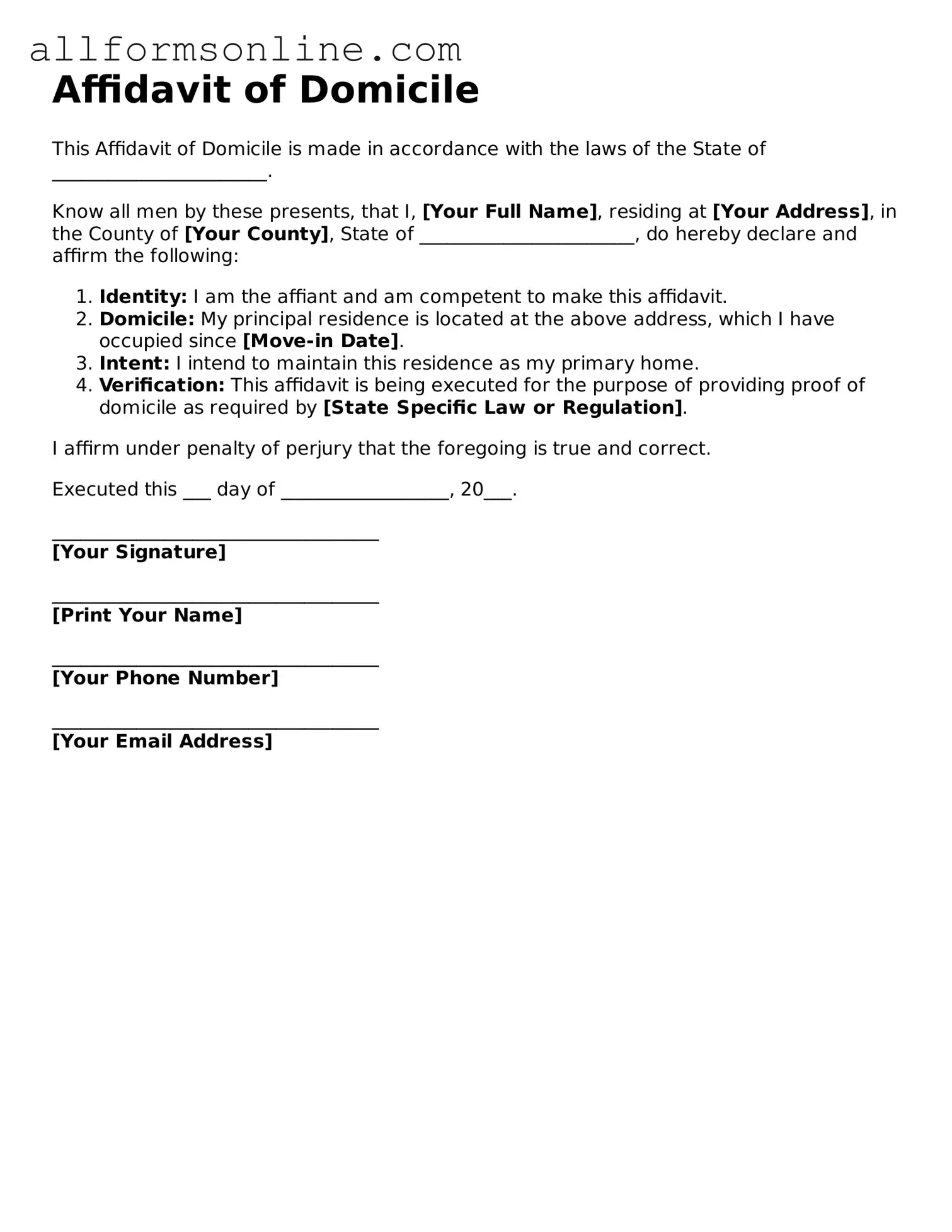What is an Affidavit of Domicile?
An Affidavit of Domicile is a legal document that confirms a person's permanent residence or domicile. It is often used in estate matters, particularly when transferring assets after someone's passing. This affidavit helps establish the deceased's last known address, which can be crucial for settling their estate and ensuring that assets are distributed according to their wishes.
Who needs to complete an Affidavit of Domicile?
Typically, an Affidavit of Domicile is completed by the executor or administrator of an estate. If a person has passed away and their assets need to be transferred, the executor may need to provide proof of the deceased's last residence. This document can also be useful for individuals who are relocating and need to establish their new permanent address.
What information is required in an Affidavit of Domicile?
The affidavit usually includes the full name of the deceased, their date of birth, and their last known address. Additionally, the person completing the affidavit must provide their own name, relationship to the deceased, and a statement affirming the accuracy of the information. Some jurisdictions may require additional details, so it’s important to check local requirements.
Is an Affidavit of Domicile a legally binding document?
Yes, an Affidavit of Domicile is a legally binding document once it is signed and notarized. By signing the affidavit, the affiant affirms that the information provided is true to the best of their knowledge. Misrepresentation can lead to legal consequences, so it’s essential to ensure all details are accurate.
Do I need a notary to complete an Affidavit of Domicile?
Yes, most jurisdictions require the Affidavit of Domicile to be notarized. This means that a notary public must witness the signing of the document. The notary will then add their seal, which provides an additional layer of authenticity and helps prevent fraud.
How is the Affidavit of Domicile used in estate matters?
The Affidavit of Domicile is often used to facilitate the transfer of assets, such as bank accounts or real estate, from the deceased to their heirs or beneficiaries. Financial institutions and other entities may require this affidavit to ensure that they are transferring assets to the rightful parties in accordance with the deceased's wishes.
Can the Affidavit of Domicile be challenged?
Yes, an Affidavit of Domicile can be challenged, particularly if there are disputes regarding the deceased's true residence or if there are claims from other potential heirs. If someone believes that the information in the affidavit is incorrect or misleading, they may contest it in court. This is why accuracy is crucial when completing the document.
How do I obtain an Affidavit of Domicile form?
Affidavit of Domicile forms can typically be obtained from various sources, including online legal resources, estate planning attorneys, or local probate courts. It’s important to ensure that the form you use is appropriate for your jurisdiction, as requirements can vary by state.
Are there any fees associated with filing an Affidavit of Domicile?
While the affidavit itself may not have a filing fee, there could be costs associated with notarization and any legal assistance you may seek. Additionally, if the affidavit is filed with a probate court, there may be court fees involved. It’s advisable to inquire about all potential costs beforehand to avoid surprises.
How long does it take to process an Affidavit of Domicile?
The processing time for an Affidavit of Domicile can vary depending on the institution or entity receiving it. Generally, once the affidavit is submitted, it can take anywhere from a few days to several weeks for the transfer of assets to be completed. Patience is often necessary during this process, especially in the context of estate matters.
